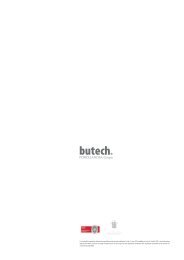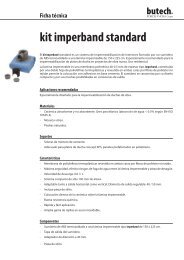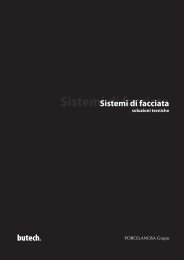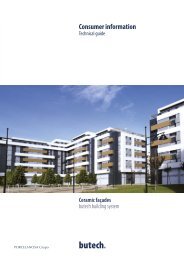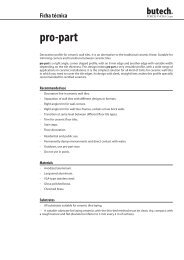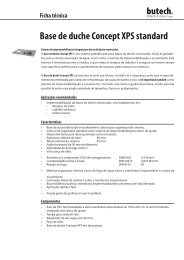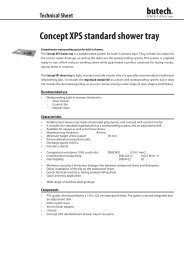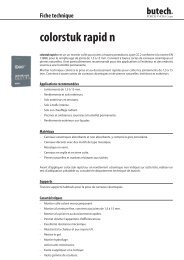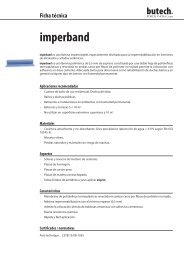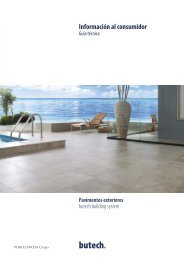Create successful ePaper yourself
Turn your PDF publications into a flip-book with our unique Google optimized e-Paper software.
27<br />
The correction factors in dB, which are necessary to obtain the corresponding data for 38M2A panels (of 38M1A) and 30SA (of 35kA) are shown in the<br />
table below.<br />
Type of coating Correction factor [dB]<br />
calcium sulfate 30S -1<br />
Chipboard 38M2 0<br />
Natural stone (S) and reconstructed (R), Ceramic tile (T<br />
Finally, the correction factors in dB are shown below for obtaining panel data with a lower cover in steel instead of aluminum.<br />
Below are some examples of how to get the data for each particular group.<br />
Type of coating Correction factor [dB]<br />
Steel (F) 0<br />
Ex.1: Panel 38M1 + tile on a structure with stringers<br />
1. In diagram 1 the data in relation to the panel 38M1 with stringers obtained are M = 34 dB;<br />
2. From Table 1 is extracted correction factor for the coating of tiles (T), which is - 1dB. The horizontal aerial noise reduction is, therefore, (Dnfw) 34-1 =<br />
33dB<br />
Ex.2: Panel 30SF + vinyl on a structure with stringers P and with acoustic insulation sheet stuck.<br />
1. In diagram 1 the data in relation to the panel 35SA with stringers P obtained are P = 36 dB;<br />
2. From Table 1 is extracted correction factor for the vinyl (V), which is + 1 dB;<br />
3. From Table 2 extracts the correction factor for the panel 30S starting at 35S, which is-1dB;<br />
4. From Table 3 extracts the correction factor in the lower cover in steel, which is 0 dB. Therefore, the reduction of aerial sound horizontal is (D nfw ) 36 +<br />
1-1+ 0 = 36dB.<br />
NOTE: It should be noted that the process of in-situ test was carried out in a modular access floor installed in compliance with current regulations in<br />
place with construction features and standard techniques. In particular, we note the following:<br />
• The slab was cleaned completely and then it was applied an anti-dust product;<br />
• The slab with RAP honeycomb shape of pre-compressed air was perfectly smoothed, with a total thickness of 20 + 5 cm;<br />
• A simple dividing wall was used for testing with a thickness of 100 mm (plasterboard 12.5 mm, stone wool + 40 + plasterboard12.5 mm);<br />
• A perimeter adhesive seal was placed on the edge of the tile 25x25mm;<br />
• The supports were stuck in compliance with appropriate regulations for the slab;<br />
• For the test it was used a sound insulation sheet with a thickness of 5 mm;<br />
• For the test it was used an acoustic partition under the floor sound with the same features of the partition wall.<br />
-1



